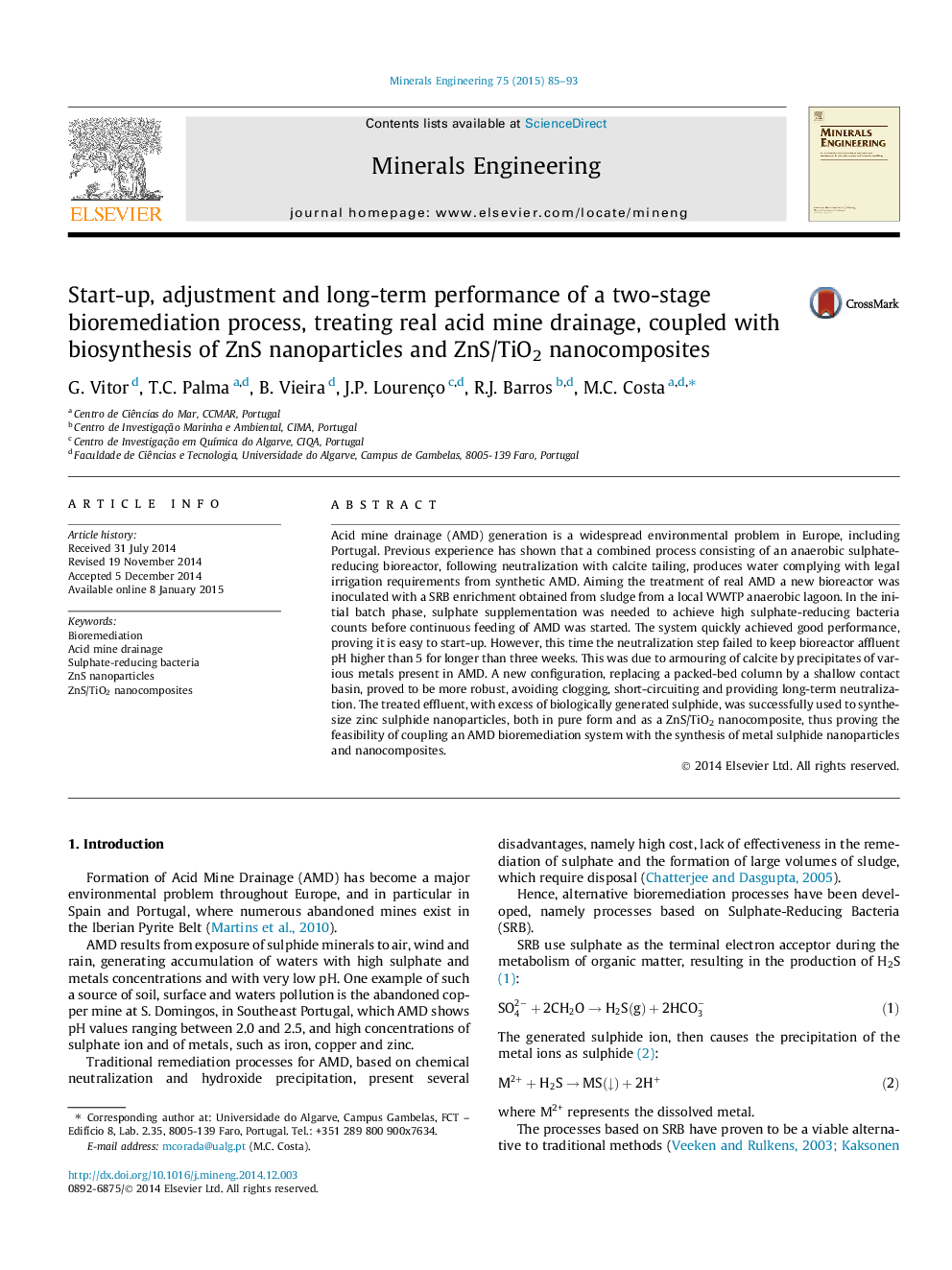| کد مقاله | کد نشریه | سال انتشار | مقاله انگلیسی | نسخه تمام متن |
|---|---|---|---|---|
| 232976 | 465315 | 2015 | 9 صفحه PDF | دانلود رایگان |

• SRB-based bioremediation system for AMD, producing irrigation water.
• Easy startup, use of various wastes, good effectiveness in metal and SO42- removal.
• Steady performance over time (over one year since startup).
• Excess S2− used to synthesize ZnS nanoparticles and ZnS/TiO2 nanocomposites.
• ZnS and ZnS/TiO2 synthesis achieved at ambient temperature and pressure.
Acid mine drainage (AMD) generation is a widespread environmental problem in Europe, including Portugal. Previous experience has shown that a combined process consisting of an anaerobic sulphate-reducing bioreactor, following neutralization with calcite tailing, produces water complying with legal irrigation requirements from synthetic AMD. Aiming the treatment of real AMD a new bioreactor was inoculated with a SRB enrichment obtained from sludge from a local WWTP anaerobic lagoon. In the initial batch phase, sulphate supplementation was needed to achieve high sulphate-reducing bacteria counts before continuous feeding of AMD was started. The system quickly achieved good performance, proving it is easy to start-up. However, this time the neutralization step failed to keep bioreactor affluent pH higher than 5 for longer than three weeks. This was due to armouring of calcite by precipitates of various metals present in AMD. A new configuration, replacing a packed-bed column by a shallow contact basin, proved to be more robust, avoiding clogging, short-circuiting and providing long-term neutralization. The treated effluent, with excess of biologically generated sulphide, was successfully used to synthesize zinc sulphide nanoparticles, both in pure form and as a ZnS/TiO2 nanocomposite, thus proving the feasibility of coupling an AMD bioremediation system with the synthesis of metal sulphide nanoparticles and nanocomposites.
Journal: Minerals Engineering - Volume 75, 1 May 2015, Pages 85–93